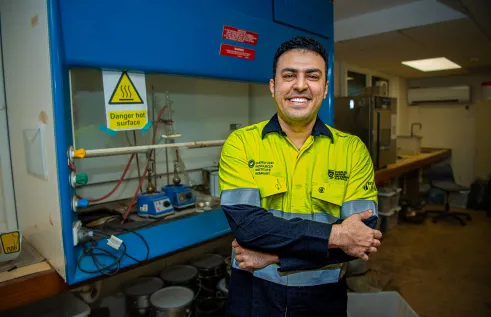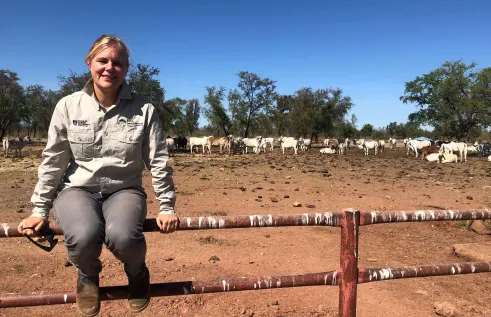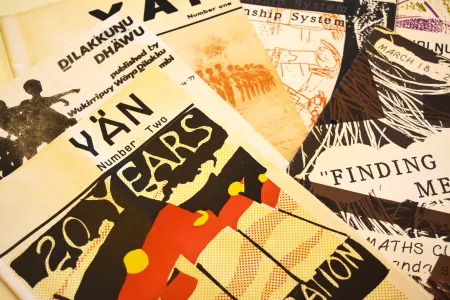News
CDU researcher safeguarding First Nations publishing history
Charles Darwin University (CDU) Professor Michael Christie, from the Northern Institute, wants help from Territorians to find and collect magazines, newsletters and newspapers produced during a unique period in Australia’s publishing history.
During the 1970s and 1980s, the sound of printing presses could be heard in remote communities right across the Northern Territory when enthusiasm was high to put the First Nations languages into print.
Books were produced in Literature Production Centres in over 25 languages that include ancestral and contact histories, traditional stories, songs, readers for literacy education, documentation of traditional food preparation, and medicine.
Many of the books were collected, digitised and archived over the last decade as part of the Living Archive of Aboriginal Languages which is now available on the internet.
At the same time the books were being collected people also donated magazines, newsletters, and newspapers, which had been produced in the same Literature Production Centres.
“These are a snapshot of what life was like in these communities in the 70s and 80s,” Professor Christie said.
“They contain sport results, fishing reports, ancestral stories and historical photographs from people in the community, and current affairs in the day-to-day life of the community: notices from the school or clinic or church, alongside interesting illustrations by local artists.”
Professor Christie has now turned his attention to these publications – such as the Junga Yimi from Yuendumu, or the Yutana Dhäwu from Yirrkala, because of their cultural value.
It would be a tragedy to lose this part of Australia’s publishing history, so he is asking anyone who has copies of newsletters, newspapers, and magazines in First Nations languages to lend or donate them to the collection being held at Charles Darwin University.
“These old publications may be held by families or individuals in the community, while many will be stashed away in filing cabinets or on bookshelves almost forgotten,” he said.
“For an edition of each newspaper, there might have been only 50 ever printed. And there could be only one or two copies left in existence. And as far as we can tell, very few of them are in any library collection in Australia.”
The call for First Nations publications to be collected comes while the university celebrates NAIDOC week (July 3-10) when all Australians participate to learn about and recognise First Nations cultures and histories.
It’s planned that the newspaper collection will be digitised and made available to the public through the NT’s Territory Stories website, as a fascinating historical record for the next generations.
Related Articles

Where rubber meets the road: Old tyres are key to building tougher roads
Almost half of the Northern Territory’s worn-out tyres end up in landfills – with the rest exported interstate for recycling – but a study led by Charles Darwin University (CDU) is repurposing the discarded rubber to build stronger, sustainable roads that meet the NT’s unique needs.
Read more about Where rubber meets the road: Old tyres are key to building tougher roads
Social media subjecting Black women to radicalised digital policing
Influencers use oppression, manipulation and weaponisation to police Black women on social media, according to new research uncovering the entrenched nature of digital racism.
Read more about Social media subjecting Black women to radicalised digital policing
Moo-ving the boundaries: New research evaluates virtual fences for use on NT cattle stations
Cattle producers in Northern Australia face unique challenges when adapting tools like virtual fences on their properties, but new research from Charles Darwin University (CDU) is set to break down the barriers to this technology.
Read more about Moo-ving the boundaries: New research evaluates virtual fences for use on NT cattle stations
